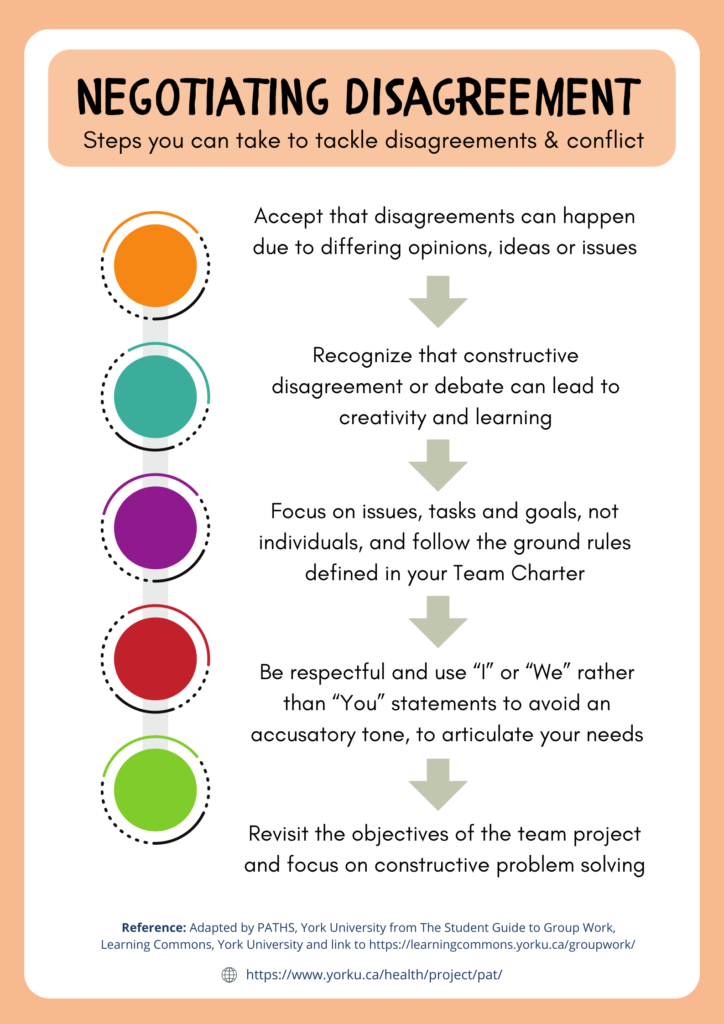About this PATHS attribute
Group work and teamwork, terms often used interchangeably, involve two or more individuals collaborating to achieve a common goal.
Where to start? Follow this pathway for a complete learning experience or pick the scenario that applies to your course. Each section includes:
- A description of the learning object and associated learning outcomes
- Estimated activity time
- Instructor notes and helpful suggestions
- Options to download or embed resources
- Video transcripts and accessible document versions
For examples of how to organize content in eClass, visit our demo site.
New to H5P? Learn more about using and adapting H5Ps in eClass here.
Expand to explore
Incorporating teamwork
Estimated Reading Time: 1 minute
Be Intentional
- Identify opportunities to incorporate teamwork in your course.
- Decide what you want to achieve through the team activity and how the activity relates to your course objectives, learning outcomes and course content.
- Consider the following:
- "What is the objective of the activity? How will that objective be furthered by asking students to work in groups?
- Is the activity challenging or complex enough that it requires group work? Will the project require true collaboration?"1
- Will this be a brief activity? A small, in-class activity? A larger activity over several weeks?
Be Clear
- Talk to students about the benefits of working in teams and developing teamwork skills, explain why these skills are important and why you are incorporating teamwork activities and group assignments in the course. Clarify your role as the facilitator.
- Introduce students to teamwork by incorporating PATHS learning objects and tools into your course.
Be Mindful
- Select meaningful opportunities that align with the course learning objectives and let others go. Students should not be overwhelmed with strategies and activities.
- Ensure activities and opportunities are presented in accessible and inclusive formats.
End Notes:
- University of Waterloo, Centre for Teaching Excellence. "Implementing Group Work in the Classroom".
Ryerson University, Learning and Teaching Office. "Best Practices on Groupwork"
University of Waterloo, Centre for Teaching Excellence. "Implementing Group Work in the Classroom".
Explore strategies
Estimated Reading Time: 3 minutes
| Description and Examples | PATHS Tools |
|---|---|
| Explain the big picture or final goal of the team activity and why you have structured the activity a particular way (e.g. designed with several steps and smaller activities).1 | Scaffolded Learning and Timely Feedback |
| Talk to students about their past experiences with teamwork. Together, discuss challenges and what worked well, and allow them to establish some ground rules for successful collaboration in the classroom. | |
| Help build a team atmosphere. Have students introduce themselves to their team and share something about themselves before attending to their task. For longer activities, consider introducing an ice breaker and incorporating a team charter. | Develop a Team Charter |
| Devote time to discussing and developing teamwork skills and provide students with guidance, tools and resources to help them practice developing effective teamwork skills. | Prepare Students for Teamwork Support Students Working in Teams |
| Nudge students to supports and resources that will help them overcome challenges as teams. | Help Students Navigate Challenges in Teams |
| Description and Examples | PATHS Tools |
|---|---|
| Introduce students to teamwork early on with small team activities (e.g. discussing the syllabus, Buzz Groups, Jigsaw, Think-Pair-Share)2 | |
| Make real-world connections with case studies and authentic learning or problem based learning activities and ask students to generate ideas and solutions as team. | Connections to Real-World Experience Pathway |
| Use teamwork to help students tackle larger, complex tasks and generate ideas (e.g. brainstorming, mind mapping, presentations, podcasts, research). | |
| Create study teams to support student learning and leverage the benefits of learning as teams. |
| Description and Examples | PATHS Tools |
|---|---|
| Rubrics: Provide students with a teamwork rubric that will be used to evaluate the team outcome and their participation. | Teamwork Rubric |
| Team Check Ins: Use feedback and formative assessment tools to help students receive and use feedback to improve performance. | Checking in as a Team |
| Peer and self-evaluation: Ask students to submit peer and self-evaluations for summative purposes. | Peer and Self-Evaluation Tool |
| Team evaluation: Ask teams to submit a team evaluation as a summative assessment. | Teamwork Rubric |
Helpful Considerations
- How will teams be formed and how many students will be on each team? How will you ensure diversity? Team size can depend on the number of students in your course, the size of your classroom and type of course (online, asynchronous, hybrid, in-person), the variety of voices needed within a team, and the complexity of the task assigned. Randomly assigning students to teams is suggested, however, to ensure diversity across teams this may require you to assign students more strategically.
- How will students be physically arranged in groups if the team activity takes place in the classroom? "Will it be easy for groups to form and for all students to be comfortable? Consider how the layout of your classroom will impact sound volume in the space. Will students be able to hear one another and communicate clearly? How can you moderate the activity to control volume?"2
- When will teams do the bulk of their work and how much time will the team activity take? Will students have sufficient time to collaborate and complete the activity as a team? Will students work together during class time at all?2
- It is important to ensure accessible and inclusive opportunities for students to complete activities and practice developing their self-regulation skills.
End Notes:
- University of Waterloo, Centre for Teaching Excellence. "Implementing Group Work in the Classroom".
- University of Waterloo, Centre for Teaching Excellence. Group Work in the Classroom: Types of Small Groups and Group work in the Classroom: Small Group Tasks.
Carneige Mellon University, Eberly Center. "Group Projects: What are the best practices for designing group projects?".
George Washington University, Himmelfarb Health Sciences Library. "Team Effectiveness".
Ryerson University, Learning and Teaching Office. "Best Practices on Groupwork"
Using PATHS learning objects
Estimated Reading Time: 1 minute
- Customize PATHS tools to incorporate examples and information specific to the course topic, divide information and lessons into smaller activities, and make connections for students between course content and real-word examples (e.g. discuss how professionals in your discipline work in teams).
- Include PATHS tools as stand-alone learning objects or supplementary content to support class assignments, activities, and tasks. PATHS tools can be graded or ungraded activities.
- Avoid using PATHS tools solely as an "additional resource" for students to explore on their own time.
- Explicitly introduce PATHS activities to students. You can do so during class, in your syllabus, online, or as a class announcement.
- Identify where you may need to provide alternate versions and accessible documents for students, these options are provided across all PATHS tools.
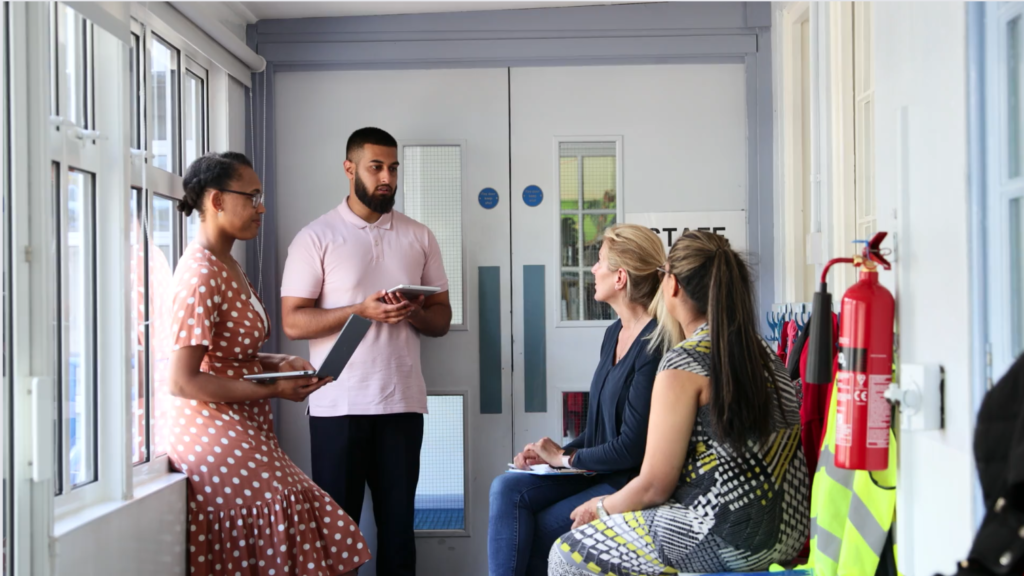
Accomplish more by collaborating as teams
Students complete group assignments and teamwork to accomplish tasks through collaboration. Through working with others, students can develop their skills in problem-solving and decision-making, communication and active listening, integrative and critical thinking, maintaining team relationships, and leadership of self and others.
- Learning about group and teamwork
- Understanding the stages of teamwork and team dynamics
- Building high performing teams
Learning about group and teamwork
Estimated time: 6.5 minutes
Format: Interactive Video
Description: Students will learn about the distinction between group work and teamwork, why we work in teams, why early experiences with teamwork in the classroom are important and identify skills and characteristics of high performing teams.
Note for instructors: Instructors can assign this interactive video before or as part of the first team assignment in a course. Students can prepare by watching the interactive video, individually or with their team. This learning object can be paired with any of the items in this section or be used as a stand-alone item.
Student Learning Object (H5P)
Other available formats: YouTube Video, Video Transcript
How do effective teams work?
Estimated time: 7.5 minutes
Format: Interactive Video
Description: Students will learn about team dynamics through Tuckman's model of team development, recognize team dynamics and group conflict, reflect on a past teamwork experience and recognize the importance of teamwork to learning and professional settings.
Note for instructors: Instructors can assign this interactive video before or as part of the first group or team assignment in a course. Students can watch this interactive video, individually or with their team, to prepare. This learning object can be paired with any of the items in this section or used as a stand-alone item.
Student Learning Object (H5P)
Other available formats: YouTube Video, Video Transcript
Student Learning Object (PDF)
Tuckman's model of team development
Estimated time: 1-2 minutes
Format: Infographic
Description: This learning object provides a high-level, breakdown of Tuckman's model of team development.
Note for instructors: This learning object provides a condescend version of the content provided in the "How do effective teams work?" interactive video. Instructors may choose to use this learning object as a stand-alone item or as supplementary content.
Suggestion: Instructors can share this information as part of an announcement in eClass upon the start of a group assignment or include this learning object in a group assignment document.
Student Learning Object
Building high performing teams
Estimated time: 15 minutes
Format: Activity (Interactive Presentation)
Description: Students will have the opportunity to make connections to real-world examples by learning about Google's research about high-performing teams. Students will also be introduced to strategies that promote psychological safety in teams.
Note for instructors: Instructors can pair this learning object along with any other items in this section. Instructors can also separate the components of this learning object by first focusing on the traits of successful teams, and then introducing students to strategies that support psychological safety.
Student Learning Object (H5P)
Other available formats: Audio Transcript, Word Document, Infographic
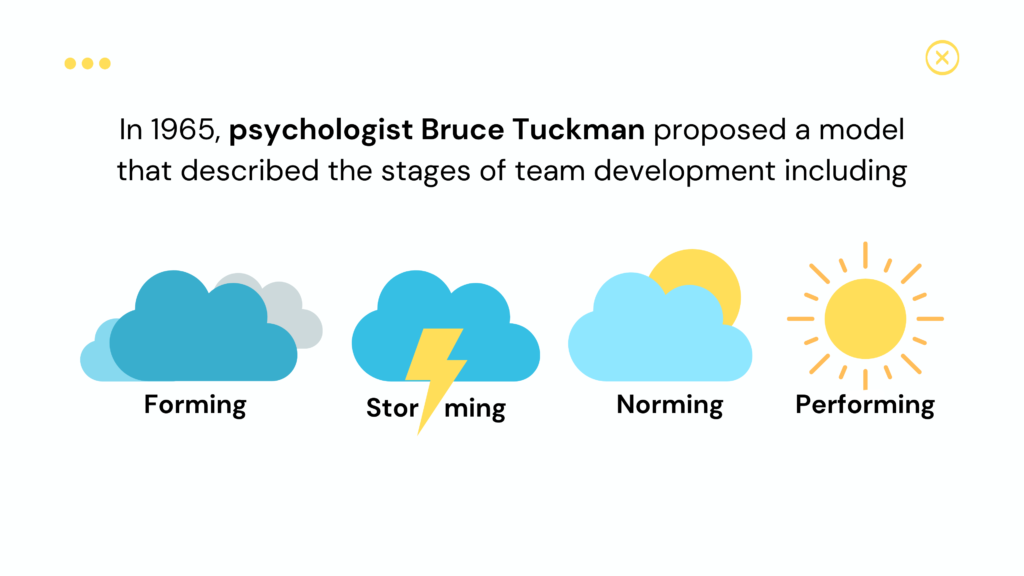
Learning the fundamentals of teamwork
Providing guidance through effective tools and templates can help students get a positive start to teamwork and prepare them to navigate more complex tasks and assignments later in their studies.
- Developing a team charter
- Making decisions as a team
- Checking in as a team
- Staying on track
- Formative mid-term peer evaluation tool
Developing a team charter
Estimated time: 10-15 minutes
Format: Activity (Worksheet)
Description: Students will work to develop a foundational document (Team Charter) that will set team ground rules and expectations , identify goals and set timelines, and determine roles and responsibilities. This document will serve as a reference point for the duration of the project and can help students navigate the processes and challenges of teamwork.
Note for instructors: Instructors can have teams complete a Team Charter prior to introducing any of the other items in this section and sections below.
Suggestion: This learning object can be paired with "Support self-regulated learning: Setting SMART(ER) Goals".
Student Learning Object (H5P)
Other available formats: Word Document
Making decisions as a team
Estimated time: 2 mins
Format: Activity (Interactive Presentation)
Description: Students will learn about common team decision making techniques and identify which technique(s) they will use as a team.
Note for instructors: Instructors can assign this activity for students to complete individually or as a team. This tool can be used as a presentation or slide deck to review the common techniques with students.
Student Learning Object (H5P)
Other available formats: Word Document
Checking in as a team: Team Huddle
Estimated time: 5-15 mins
Format: Activity (Worksheet)
Description: Students will learn how to assess team environment and performance using the “Stop, Start, Continue” feedback model and identify actions to maintain or improve team environment and performance. Students can apply this tool during a team huddle at their next team meeting.
Note for instructors: Instructors can pair this learning object with all other items in this section, or introduce this activity separately, ideally early in the team development stage. Instructors can assign this learning object for students individually and then ask students to incorporate this tool as part of normal team meetings.
Student Learning Object (H5P)
Other available formats: Word Document
Team meeting planner
Estimated time: 5-10 minutes
Format: Activity (Worksheet)
Description: Students will learn how to plan and execute effective and productive team meetings. As a team, students will create an agenda to use at an upcoming meeting and prepare to provide individual updates.
Note for instructors: Instructors can pair this learning object with all other items in this section, or, introduce this activity separately, ideally early on in the team development stage.
Suggestion: This learning object works well with the "Checking in as a team" and "Project and task tracker" learning objects in this section.
Student Learning Object (H5P)
Other available formats: Word Document
Project and task tracker
Estimated time: 5-15 minutes
Format: Activity
Description: Project and Task Tracker description
Note for instructors: Instructors can pair this learning object with all other items in this section, or, introduce this activity separately, ideally early on in the team development stage.
Suggestion: This learning object works well with the "Checking in with your team" and "Team meeting planner" learning objects in this section.
Student Learning Object (H5P)
Other available formats: Word Document
Formative mid-term peer evaluation tool
Estimated time: 5-15 minutes
Format: Activity (Worksheet)
Description: Students will learn about peer evaluation and complete a peer evaluation to provide helpful feedback to their team members.
Note for instructors: Instructors can use this tool to provide students with teamwork evaluation criteria early during the team formation process, as a helpful reference point for expectations. Instructors can adapt the submission process for completing this activity and receiving feedback based on class size, format and capacity. For example, students can submit a full team evaluation to their instructor and after review, the instructor can provide each team member with personalized feedback to maintain confidentiality.
Student Learning Object (H5P)
Other available formats: Word Document, Rubric
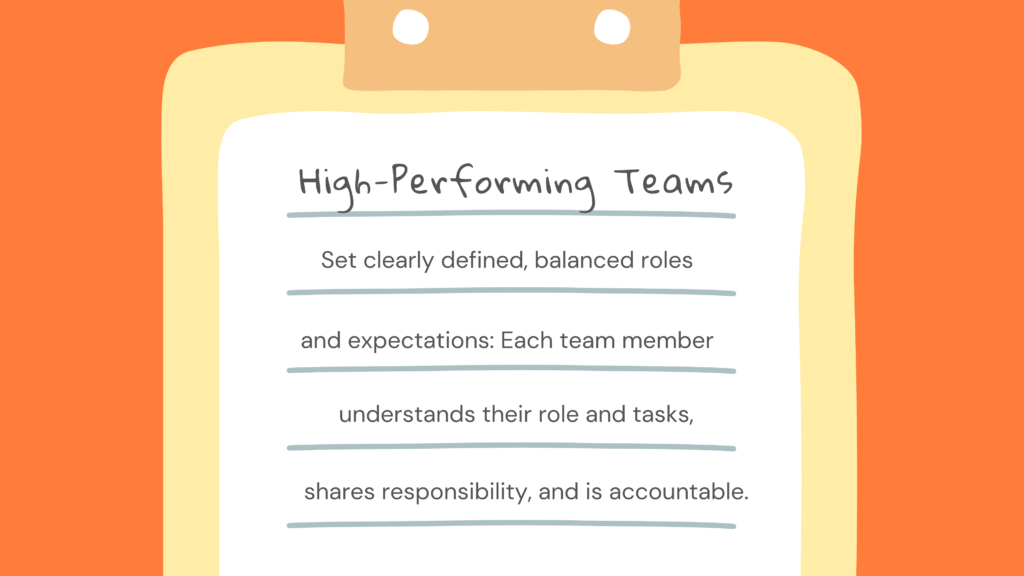
We can guide students through teamwork
Providing guidance through effective tools and templates can help students get a positive start to teamwork and prepare them to navigate more complex tasks and assignments later in their studies.
Becoming emotionally intelligent teams
Estimated time: 5.5 minutes
Format: Interactive Video
Description: In this introductory level video, students will learn about the role of emotional intelligence in building healthy team environments, recognize common challenges in teams and recognize techniques to overcome these challenges.
Note for instructors: Instructors can pair this interactive video with items found under the "Working through challenges and conflict" tab in this section to provide students with helpful supplementary content and guidance.
Suggestion: Instructors can explore and pair learning objects related to self-regulation and mindfulness in the PATHS Self-Regulation pathway.
Student Learning Object (H5P)
Other available formats: YouTube Video, Video Transcript
Overcoming groupthink
Estimated time: 10-15 minutes
Format: Activity (Interactive Presentation)
Description: Students will learn about groupthink, its signs and symptoms, and strategies for overcoming groupthink.
Note for instructors: This learning object can be adapted into two separate activities. First, students can learn about groupthink and understand its symptoms. Then, students can learn about strategies to overcome groupthink and apply these strategies in the future.
Student Learning Object (H5P)
Other available formats: Word Document
Using emotional intelligence to resolve conflict
Estimated time: 2-3 minutes
Format: Infographic
Description: Students will have an opportunity to practice using emotional to help resolve a conflict.
Note for instructors: As a stand alone item, instructors can share this information as part of an announcement in eClass upon the start of a group assignment or include this learning object in a group assignment document.
Suggestion: Instructors can explore and pair learning objects related to self-regulation and mindfulness in the PATHS Self-Regulation pathway.
Student Learning Object (PDF)
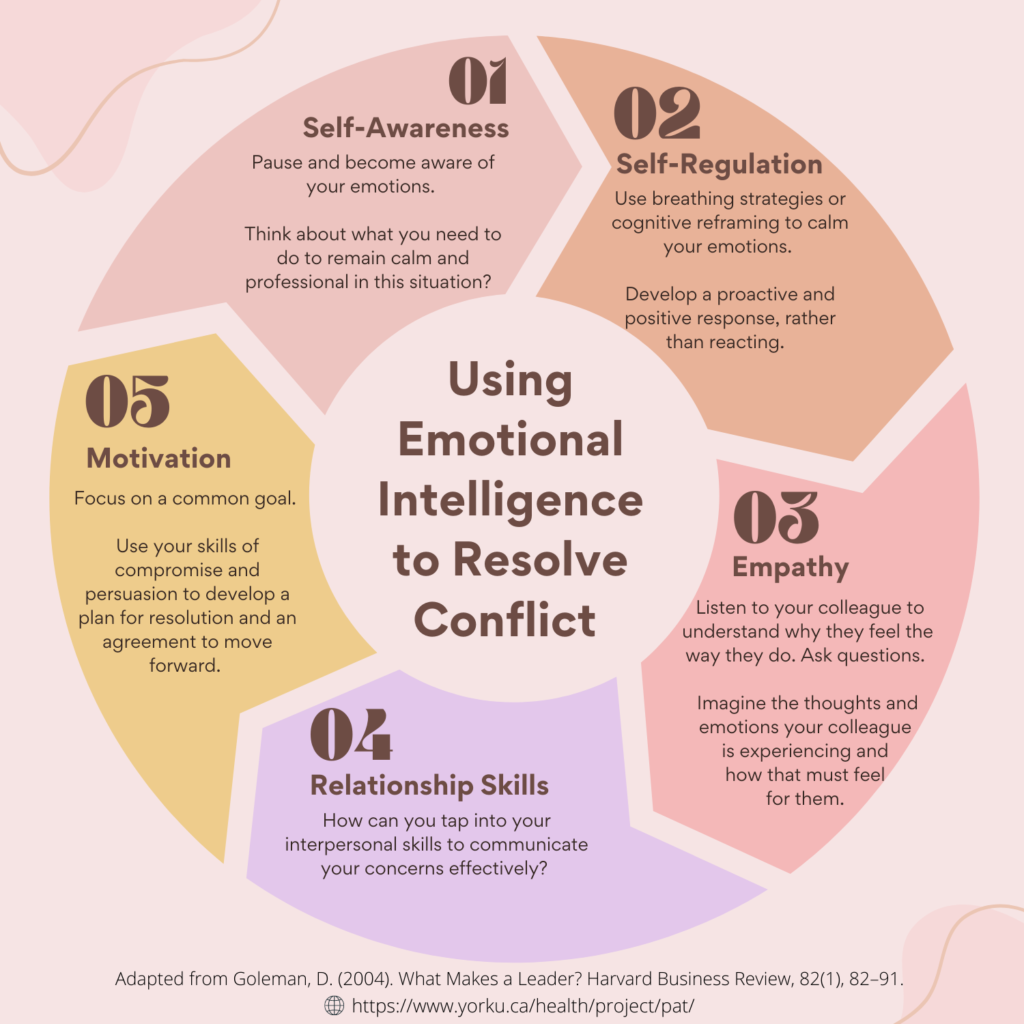
Negotiating disagreements
Estimated time: 1-2 minutes
Format: Infographic
Description: Students will learn about simple steps and strategies they can take to negotiate disagreements and/or tackle conflicts in teams.
Note for instructors: As a stand alone item, instructors can share this information as part of an announcement in eClass upon the start of a group assignment or include this learning object in a group assignment document.
Suggestion: Instructors can explore and pair learning objects related to self-regulation and mindfulness in the PATHS Self-Regulation pathway.
Student Learning Object (PDF)
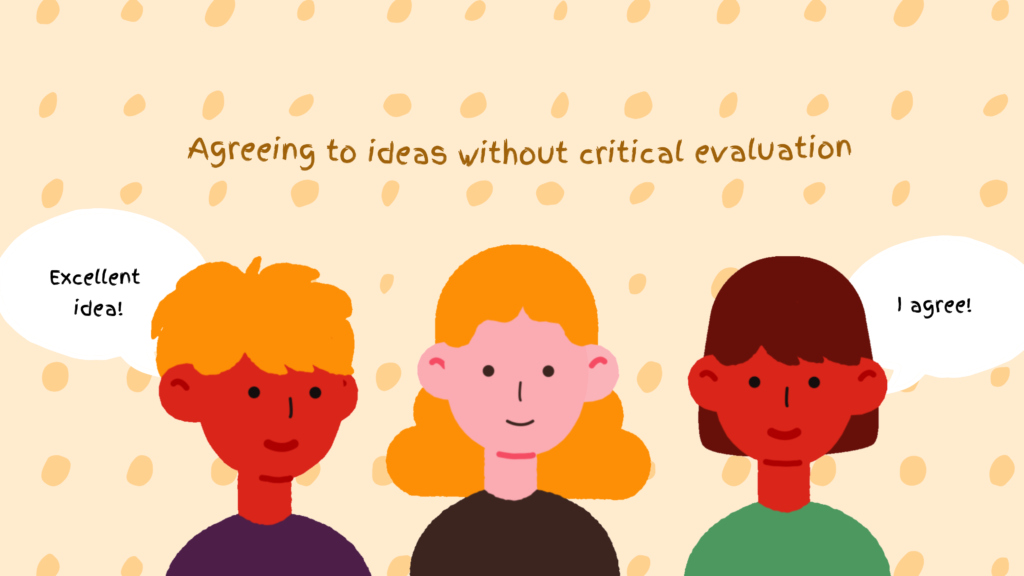
Students can learn strategies to navigate team challenges
Giving students opportunities to learn about strategies to navigate team issues like disagreements, groupthink, or other conflicts, empowers them with tools to overcome these challenges and move forward with their goals.
Self and peer evaluation tool
Estimated time: N/A
Format: Activity
Description: Students will learn about the purpose of evaluation, how to provide effective feedback, and will complete a self and peer evaluation after a team activity or group assignment has been completed.
Note for instructors: Instructors can use this tool to provide students with teamwork evaluation criteria early during the team formation process, as a helpful reference point for expectations. Instructors can adapt the submission process for completing this tool and receiving feedback based on class size, format and capacity. For example, students can submit a full team evaluation to their instructor and after review, the instructor can provide each team member with their personalized feedback to maintain confidentiality.
Student Learning Object (H5P)
Other available formats: Word Document, Rubric

Evaluation tools help students gain valuable insights
Evaluation tools provide students with a consistent set of criteria to measure their performance and progress and gain valuable insights about their areas for growth. Instructors can use these tools to provide students with guidance about standards and expectations for teamwork, evaluate student contribution and quality of work, and assess if learning outcomes are achieved.



